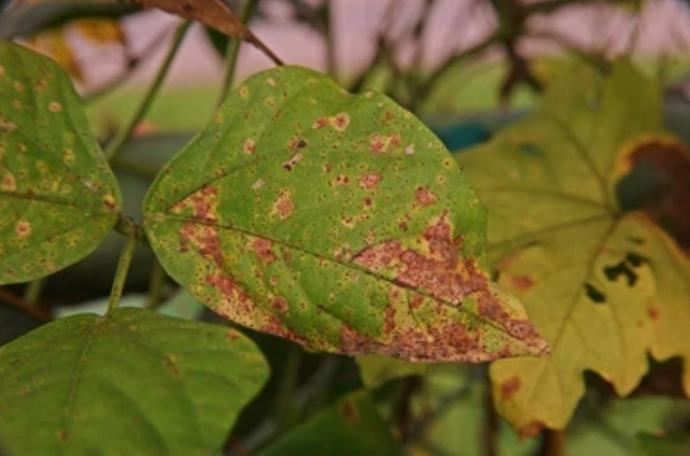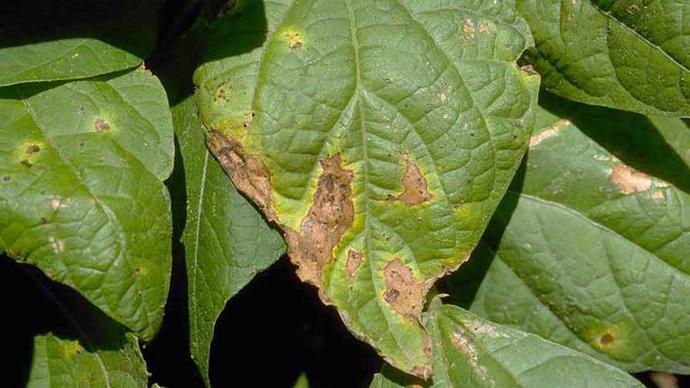Yardlong Bean Plant
Yardlong beans are annuals, grow in well-drained loamy soil and full sun. They are frost-sensitive and require moist conditions for optimal development.
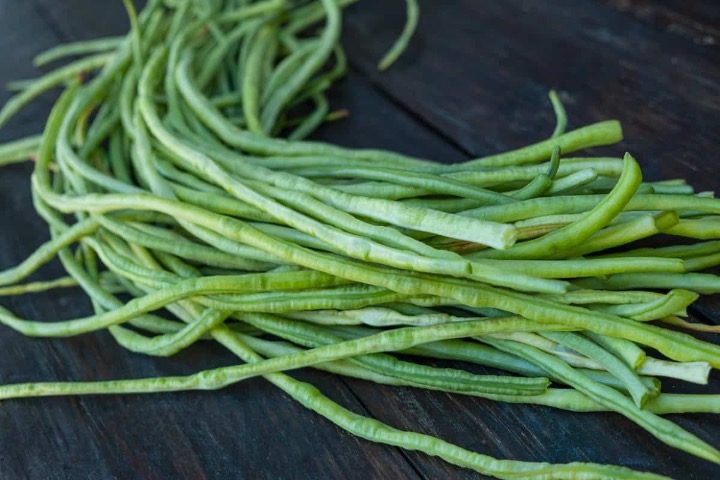
Habit
Annual
Height
2 to 3 m
Growth
Fast
Soil
Well-drained, Sandy Loam
Shade
Partial shade to full sun
Moisture
Moist
Edible
Yes
Medicinal
Yes
Origin
Asia, Africa
Climatic Condition
Tropical, Subtropical
Temperature (°)
20°C to 30°C
Humidity (%)
60% to 80%
Potting media
50% Loam, 40% Sand, 10% Organic Matter
Fertilizers
Organic Fertilizer
Watering
Regular watering
Plant Weight
2 to 3 kg
Flowering Time
Summer to Fall
Soil Ph level
6.0 to 7.5
Water Ph level
6.0 to 7.0
Soil EC
0.5 to 1.0 mS/cm
Yield Per Plant
20 to 30 kg per plant
NPK ratio
10:10:10
life Span
2 to 5 years
Health Benefits
High in Protein, Antioxidant
Suggested Grow Media or Potting Mix ?
50% loamy soil, 30% compost, 20% sand
Suggested Fertigation/Fertilizers
Fertilize every 2 weeks with a balanced fertilizer.
Common Diseases and Remedies
Bacterial Leaf Spot , Cercospora Leaf Spot .
Water soaked lesions , Disorted leaves .
Remove infected leaves , Avoid water splash while irrigating .
HEALTH BENEFITS
· Rich in vitamin C and A, boosting immunity and skin health.
· Contains fiber, aiding digestion and weight management.
· Good source of iron, helping prevent anemia.
· Supports heart health by lowering cholesterol levels.
What Is An Yardlong beanTree?
The yardlong bean plant, deductively known as Vigna unguiculata subsp. sesquipedalis, is a lively climbing plant local to Southeast Asia. Its name is gotten from the noteworthy length of its units, which can reach up to 36 inches (around one yard) long. This individual from the vegetable family, Fabaceae, includes long, thin, green cases that are normally gathered while still juvenile for culinary use. The units are fresh and delicate with a somewhat sweet flavor, making them a famous fixing in different Asian foods.
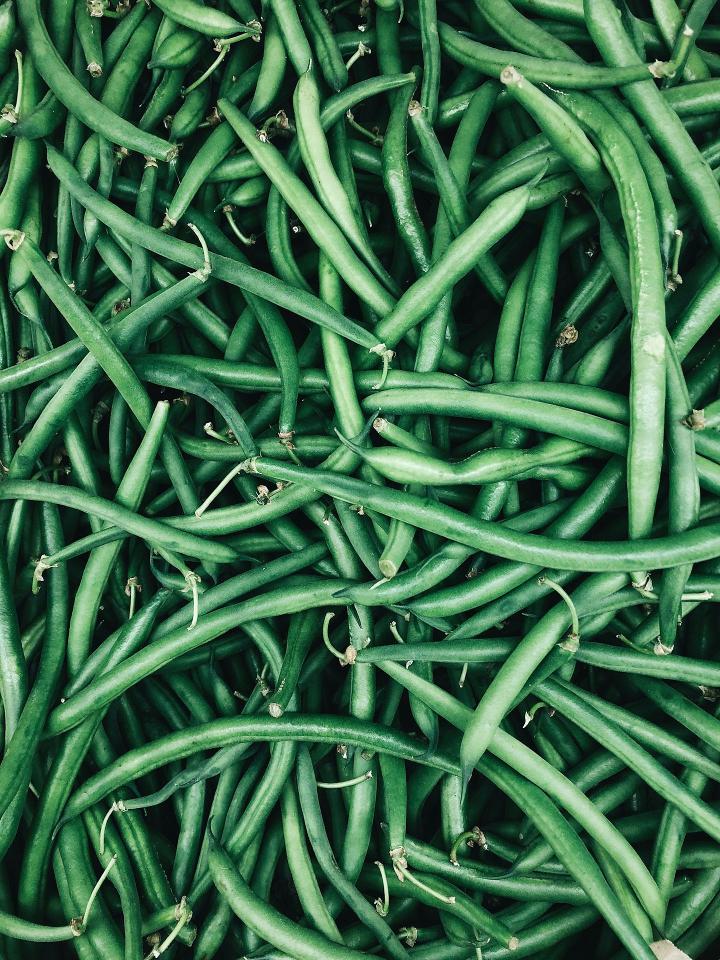
What Are The Different Types Of Yard long beanPlants?
1. Asparagus Bean
Otherwise called Chinese long bean or yardlong bean, this assortment has long, thin units with a fresh surface and gentle flavor. It's usually utilized in sautés, mixed greens, and soups.
2. Red-Cultivated Yardlong Bean
This assortment highlights cases that are like the conventional yardlong bean however with striking red seeds. It adds visual enticement for dishes and has a somewhat nuttier flavor contrasted with green-cultivated assortments.
3. Purple Yardlong Bean
These beans have purple units and are valued for their lively variety and somewhat better taste. They can be utilized similarly as green yardlong beans yet add a pop of variety to dishes.
4. White-Cultivated Yardlong Bean
This assortment has units with white seeds and a marginally milder flavor contrasted with different sorts. It's generally expected utilized in Asian foods and can be cooked in different dishes or eaten crude.
5. Thai Yardlong Bean
This assortment is famous in Thai cooking and is known for its delicate units and somewhat zesty flavor. It's not unexpected sautéed with garlic, stew, and different flavors for a delightful dish.
.
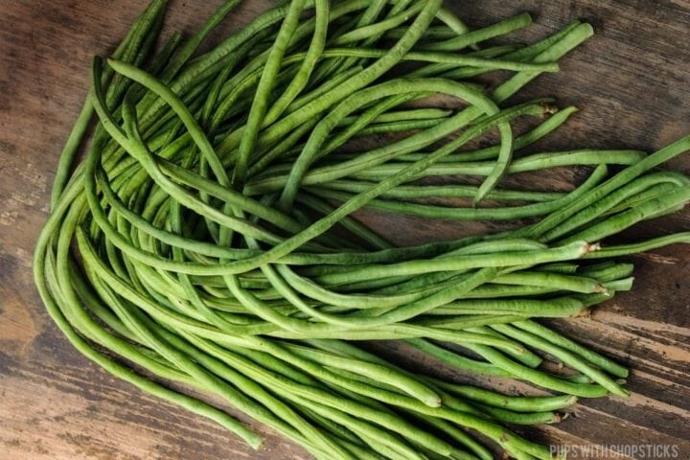
How to Care Yard long bean Plant ?
1. Location
Urban gardeners who compromise with planting magnificent and stunning plant buddies in their homes due to lack of space get happy with the mention of this areca palm variety. It requires propagation in small and colorful plastic pots with well-draining soil, and it will remain lowkey throughout its growth journey. These thrive better in a partially shaded spot safe from wind.
2. Sunshine
Yardlong bean plants require a lot of daylight to flourish. They ought to be established where they can get full sun openness, and that implies they need something like 6-8 hours of direct daylight every day.
3. Soil
Yardlong bean plants flourish in very much depleted soil with a somewhat acidic to impartial pH level, in a perfect world somewhere in the range of 6.0 and 7.5. The dirt ought to be free, friable, and wealthy in natural make a difference to help solid development and improvement.
4. Issues
Yardlong beans don't endure waterlogged soil well. Guarantee that the dirt has great seepage to keep water from pooling around the roots, which can prompt root decay and different issues. In the event that your dirt is weighty or compacted, consider revising it with natural matter, for example, fertilizer or matured compost to further develop waste.
5. Hydration
Yardlong bean plants ought to be watered consistently to keep the dirt equitably clammy yet not waterlogged. Intend to water profoundly, giving sufficient dampness to enter the root zone. Watering ought to be done promptly in the first part of the day or late in the early evening to limit water misfortune because of vanishing.
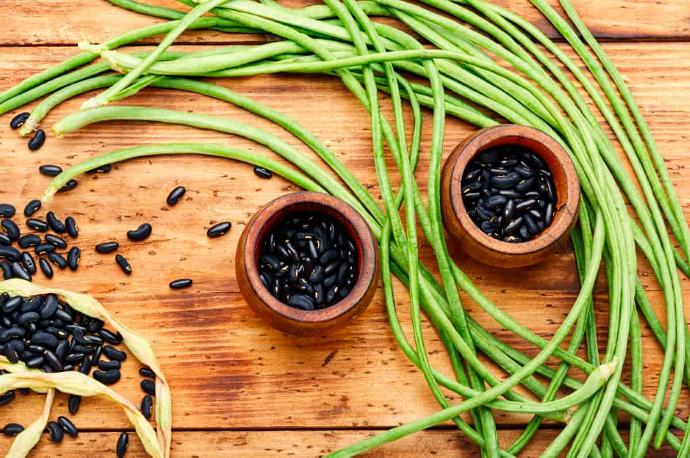
6. Nourishment
Yardlong beans are nitrogen-fixing vegetables, meaning they have a cooperative relationship with nitrogen-fixing microbes that permit them to change over climatic nitrogen into a structure that can be utilized by plants. In any case, they actually benefit from nitrogen-rich soil, particularly during the beginning phases of development and unit advancement. Integrating nitrogen-rich manures or natural changes, for example, fertilizer or matured compost can assist with giving a consistent inventory of nitrogen to help plant development and yield.
What are the Benefits of Yard long bean Plant ?
1. *Nutritional Value*: Yardlong beans are a good source of vitamins, minerals, and dietary fiber. They contain vitamins A, C, and K, as well as folate, iron, and potassium. Incorporating yardlong beans into your diet can help promote overall health and well-being.
2. *Versatility in Cooking*: Yardlong beans are a versatile ingredient in various cuisines, particularly in Asian cooking. They can be stir-fried, steamed, boiled, or added to soups, curries, salads, and stir-fries. Their crisp texture and mild flavor make them a popular choice for adding to a wide range of dishes.
FAQs About Growing Yard long bean
1. how to maintain yardlong plant
Provide consistent moisture to yardlong bean plants by watering them regularly, especially during dry periods. Water deeply, allowing the soil to dry out slightly between waterings to prevent waterlogging.
2. what are the uses of yardlong bean plant ?
Yardlong beans are a versatile ingredient in various cuisines, particularly in Asian cooking. They can be stir-fried, sautéed, steamed, boiled, or blanched and added to a wide range of dishes such as stir-fries, curries, soups, salads, and noodle dishes
3. can i grow yardlong bean plant indoor ?
Yardlong bean plants require plenty of sunlight to thrive, so it's essential to provide them with as much natural light as possible. Place indoor plants near a south-facing window where they can receive at least 6-8 hours of direct sunlight each day. If natural light is limited, supplement with artificial grow lights to ensure adequate light levels for plant growth
4. which pot is best for growing yardlong bean plant?
Choose large containers that are at least 12-18 inches deep and wide to accommodate the long taproots of yardlong bean plants and provide plenty of room for growth. A larger container allows for more soil volume, which helps retain moisture and nutrients and reduces the frequency of watering.
5. where can i shop yardlong bean plant?
Visit nearby nurseries or garden centers in your area that specialize in vegetable plants and gardening supplies. They may carry yardlong bean plants, especially during the growing season or spring planting season.
